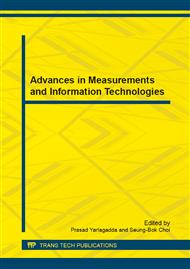p.386
p.390
p.394
p.403
p.407
p.413
p.418
p.422
p.429
Detection Algorithm of Semantic Inconsistency for Fuzzy Ontology Merging
Abstract:
Fuzzy ontology can be built to effectively deal with uncertainty and ambiguity for domain knowledge modeling. Merging multiple fuzzy local ontologies may implement semantic integration of multiple data sources and semantic interoperability between heterogeneous systems in distributed environment. In order to solve the problem of semantic inconsistency mappings for fuzzy ontology merging system, we proposed a detection algorithm of semantic inconsistency mapping which includes sub detection methods of circular semantic inconsistency, subclass-of axiom redundancy semantic inconsistency, attribute membership semantic inconsistency and disjoint axioms redundancy semantic inconsistency. With the detection algorithm of semantic inconsistency, we establish fuzzy ontology merging system in experiment.
Info:
Periodical:
Pages:
407-412
Citation:
Online since:
February 2014
Authors:
Price:
Сopyright:
© 2014 Trans Tech Publications Ltd. All Rights Reserved
Share:
Citation:


